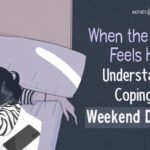- A UNICEF study reveals only 41% of young Indian people are open to therapy
- To address the skyrocketing mental health cases, India should break the stigma around mental health support
The Covid-19 pandemic in India is accompanied by an equally devastating mental health crisis. It is important now, more than ever, that mental well-being should be sincerely addressed. However, whether people are willing to seek the appropriate support is still under question.
Even before the pandemic, mental health has been a much stigmatized affair. The Indian Journal of Psychiatry (2019) stated that 80–90% of Indians did not seek support for mental distress. Moreover, India lacked substantial psychiatric capital to address the severity of psychological comorbidities prevalent amongst its populace.
With the pandemic, came strict lockdown laws, social and physical distancing, financial crunches, and pandemic blues which worsened the situation. Mental health cases skyrocketed to almost 70% by March 2020. The National Commission for Women registered an increased number of complaints about domestic abuse. Apart from health workers and migrant laborers, the most devastated demography included children and adolescents.
Despite the worrying numbers, India is yet to address its mental health crisis. People display reluctance in seeking mental healthcare. This is affirmed by a recent UNESCO survey that revealed India to be the least inclined towards seeking help for mental distress. Only 41% of young Indian people (aged 15–24 years) believed in mental healthcare. In comparison, 56–95% of young people in the other 21 countries supported approaching help for mental well-being. Even India’s budget allocation for mental health is at an all-time low. It is down from 0.44% in 2010 to 0.06% in 2020.
The situation calls for urgent investment in mental healthcare, especially for children and adolescents. Interventions, strategies, and public programs should be made affordably accessible across health, education, and social sectors to combat mental health issues.




